Do you have a question about the Yamaha Clavinova CLP-311 and is the answer not in the manual?
Ensure local voltage matches the unit's requirements.
Explains unit markings and environmental policies.
Information on battery care and product disposal.
Identifies the location of the name plate for product details.
Key safety guidelines for using electrical and electronic products.
Highlights the advanced features of the Clavinova.
Advice on cleaning, placement, and handling the instrument.
Reminder on checking the voltage selector.
Description of the main controls and their functions.
Explains buttons for recording, demos, and pedal functions.
Instructions for using the music stand.
Connecting external tone generators and audio systems.
Details on MIDI ports and headphone connections.
Steps to turn on the unit and set initial volume.
How to select and play different instrument voices.
Steps to activate and choose demo tunes.
Adjusting volume and navigating demos.
How to play two voices simultaneously.
Method for balancing volumes and shifting octaves.
Details on soft/sostenuto and damper pedal operations.
How to shift the keyboard pitch up or down.
Adjusting pitch higher or lower with fine increments.
Method to reset pitch to standard A3=440 Hz.
Activating, setting volume, and time signature.
Ways to set tempo using controls and keys.
Steps to record, data captured, and limits.
Playing back recordings, managing settings, and erasing data.
Quickly scanning through recordings.
Introduction to MIDI and common message types.
Setting MIDI channels and transpose function.
Listing of other MIDI functions available.
Managing local control and program change messages.
Managing control change message reception and transmission.
Using Multi-Timbre and Split modes for MIDI control.
Transmitting recorder memory data to external devices.
Addresses common problems like no sound or pedal issues.
Lists optional accessories like benches and expander modules.
Identifying and removing parts from the box.
Connecting side panels to the pedal box.
Installing the center panel between the side panels.
How to attach the main keyboard unit to the stand.
Routing and connecting the pedal cord.
Setting voltage selector and adjusting stand height.
Securing the keyboard and connecting the pedal cord.
Setting voltage and adjusting stand feet for stability.
Positioning and attaching the main unit to the stand.
Connecting pedal cord and setting voltage selector.
Fine-tuning pedal stability and effect.
Detailed format for MIDI note, control, and system exclusive messages.
Formats for tempo and panel data transmission.
Technical specifications of the CLP-311 model.
FCC compliance rules for US users regarding modifications and cables.
Safety instructions for connecting the mains lead in the UK.
| Brand | Yamaha |
|---|---|
| Model | Clavinova CLP-311 |
| Category | Musical Instrument |
| Language | English |
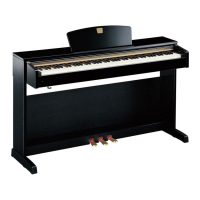
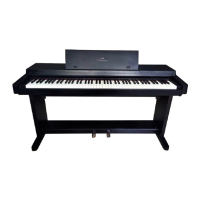
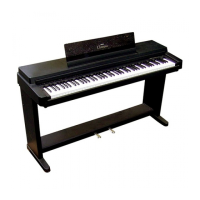



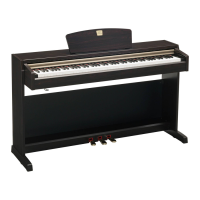
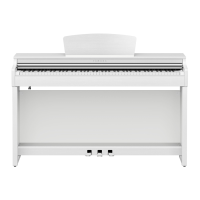




